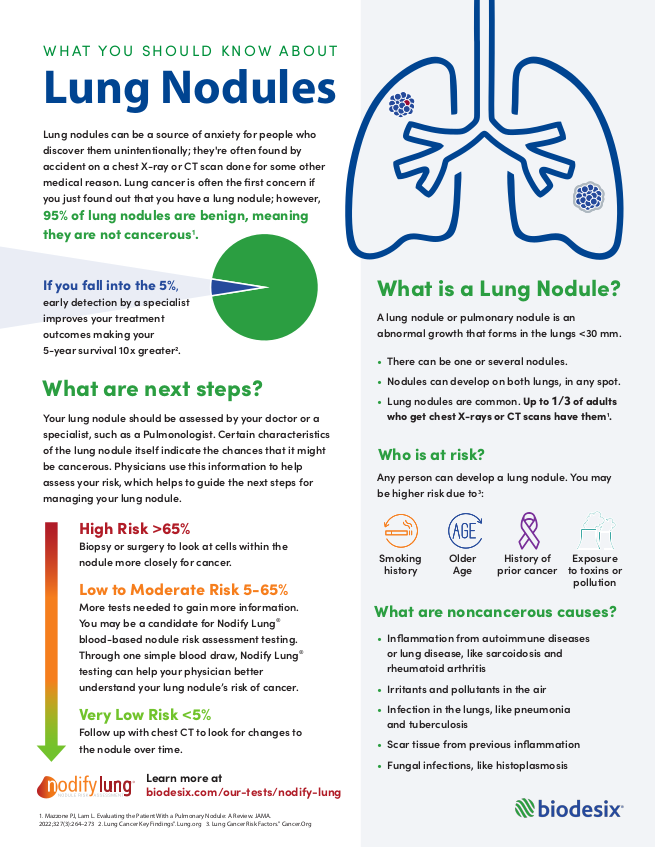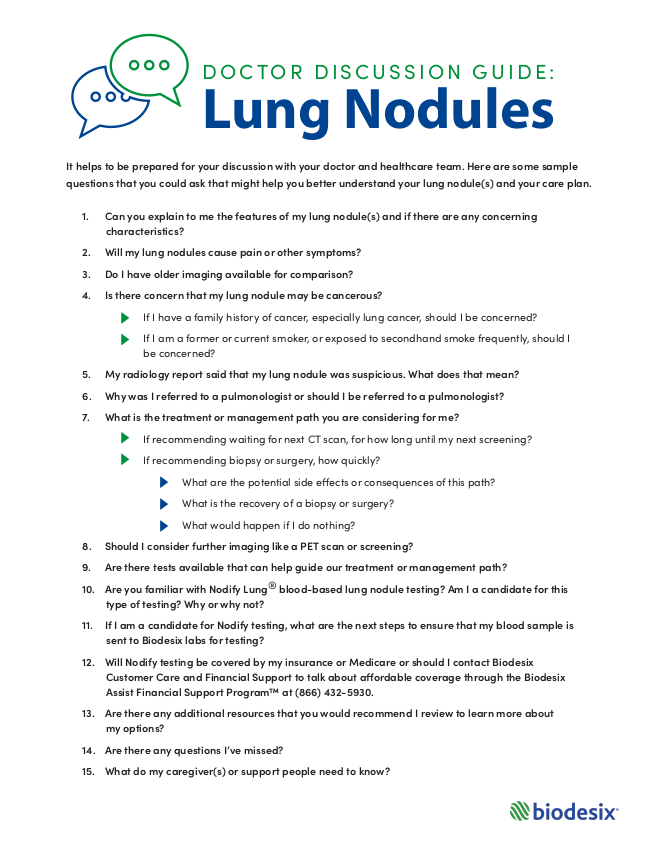Very Low Risk <5%
Follow up with chest CT to look for changes to the nodule over time.
Lung nodules can be a source of anxiety for people who discover them; they're often found by accident on a chest X-ray or CT scan done for some other medical reason. Lung cancer is often the first concern if you just found out that you have a lung nodule, however, 95% of lung nodules are benign1, meaning they are not cancerous.

If you have a lung nodule, it is important to see a specialist, like a pulmonologist, because if your nodule falls into the 5% that are cancer, early detection greatly improves your treatment outcomes.
If it's found early, outcomes are 10x better than if it's found late, so it is important to work with your doctor to rule out the possibility that your nodule is cancer.
A lung nodule or pulmonary nodule is an abnormal growth or mass that forms in the lungs.
Other factors considered
There are a range of factors to consider to assess where your lung nodule came from. Your doctor may ask you questions about your personal or family health history to help. Other information comes from the image where your nodule was found.
The structure of the nodule helps the doctor decide what to do next.
Lung nodules are small growths (less than 30mm) in the lungs
Your doctor may also look at the density of the nodule. Non-solid nodules have a halo around it or look more transparent on the image. The density of the nodule may help decide what the best next steps are for diagnosis.
Who is at risk for developing a lung nodule?
Any person can develop a lung nodule. You may be higher risk due to:
What are the next steps when a lung nodule is found?
Your lung nodule should be assessed by your doctor or a specialist. Certain characteristics of the lung nodule itself indicate the chances that it might be cancerous.
Physicians use this information to help assess your risk, which helps to guide the next steps for managing your lung nodule.
Follow up with chest CT to look for changes to the nodule over time.
More tests needed to gain further information.
You may be a candidate for Nodify Lung ® blood-based nodule risk assessment test. Through one simple blood draw, Nodify Lung testing can help your physician better understand your lung nodule’s risk of cancer
Biopsy or surgery to look at cells within the nodule more closely for cancer.

Interested in a more informed approach to managing your lung nodule with your doctor?
Nodify Lung's blood-based test helps assess the risk of it being cancerous, providing valuable insights for both you and your healthcare provider to confidently decide on the next steps.
Sources:
